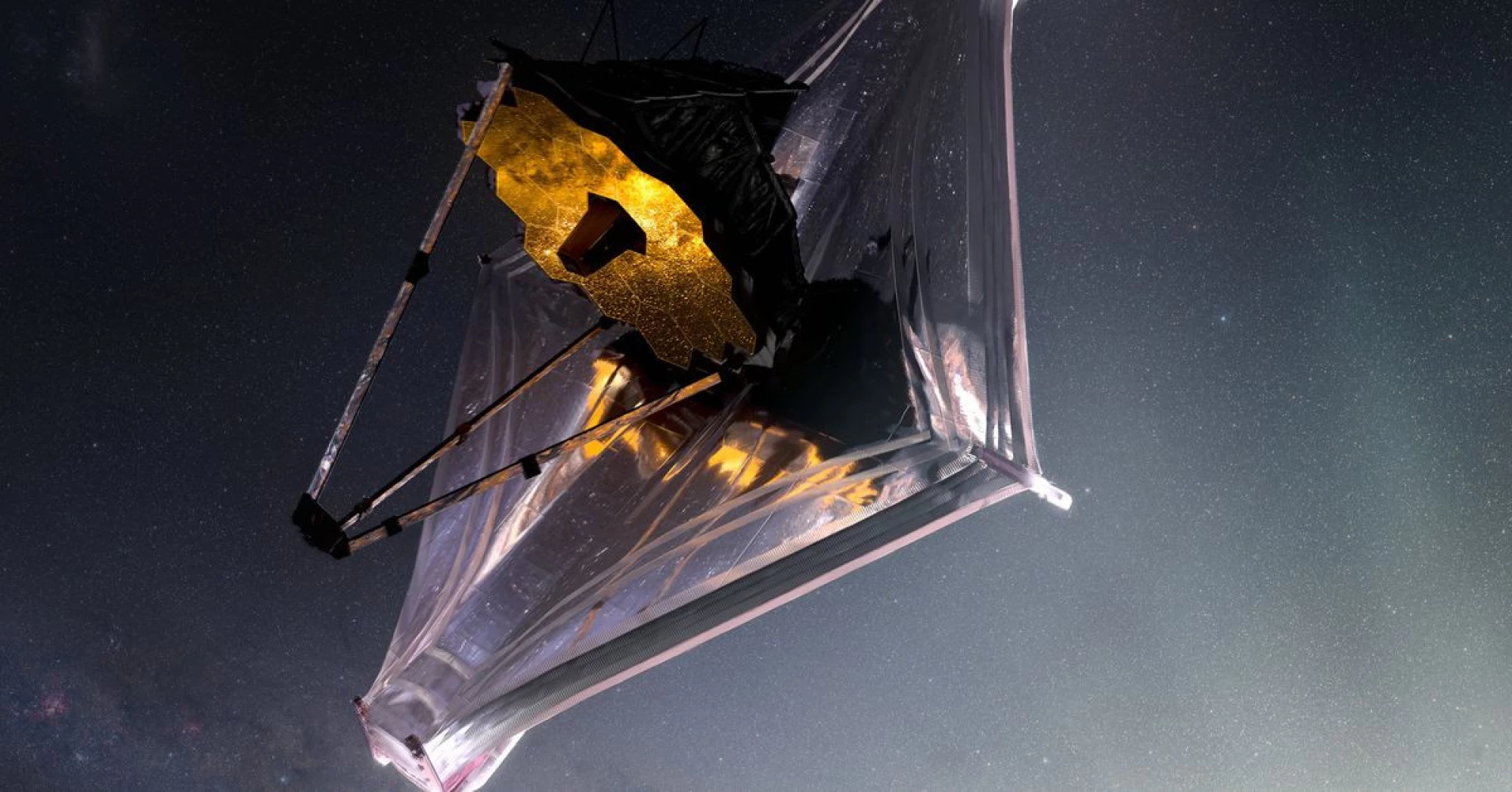NASA’s new powerful space telescope gets hit by larger than expected micrometeoroid - The Verge

NASA’s James Webb Space Telescope was hit by a relatively large micrometeoroid at the end of May, which caused detectable damage to one of the observatory’s gold-coated primary mirrors.
NASA’s new powerful space observatory, the James Webb Space Telescope, got pelted by a larger than expected micrometeoroid at the end of May, causing some detectable damage to one of the spacecraft’s 18 primary mirror segments. The impact means that the mission team will have to correct for the distortion created by the strike, but NASA says that the telescope is “still performing at a level that exceeds all mission requirements.”
NASA’s James Webb Space Telescope, or JWST, is the agency’s incredibly powerful next-generation space telescope, designed to look into the farthest reaches of the Universe and see back in time to the stars and galaxies that formed just after the Big Bang. It cost NASA nearly $10 billion to build and more than two decades to complete. But, on Christmas Day 2021, the telescope finally launched to space, where it underwent an extremely complex unfolding process before reaching its final destination roughly 1 million miles from Earth.
Since its launch, JWST has already been hit by at least four different micrometeoroids, according to a NASA blog post, but all of those were small and about the size of what NASA expected the observatory to encounter. A micrometeoroid is typically a small fragment of an asteroid, usually smaller than a grain of sand. The one that hit JWST in May, however, was larger than what the agency had prepared for, though the agency didn’t specify its exact size. NASA admits that the strike, which occurred between May 23rd and May 25th, has caused a “marginally detectable effect in the data” and that engineers are continuing to analyze the effects of the impact.
NASA expected JWST to get hit by tiny space particles during its lifetime; fast-moving specks of space rock are just an inescapable feature of the deep space environment. In fact, NASA designed the telescope’s gold-coated mirrors to withstand strikes by tiny space debris over time. The space agency also did a combination of simulations and ground testing with mirror samples to determine how to best strengthen the mirrors to withstand micrometeoroid impacts. However, NASA says that the models they used for these simulations didn’t have a micrometeoroid this large, and it was “beyond what the team could have tested on the ground.”
Still, this doesn’t come as a total surprise. “We always knew that Webb would have to weather the space environment, which includes harsh ultraviolet light and charged particles from the Sun, cosmic rays from exotic sources in the galaxy, and occasional strikes by micrometeoroids within our solar system,” Paul Geithner, technical deputy project manager at NASA’s Goddard Space Flight Center, said in a statement.
https://www.theverge.com/2022/6/8/23160209/nasa-james-webb-space-telescope-meteor-strike-impact
Rating: 5